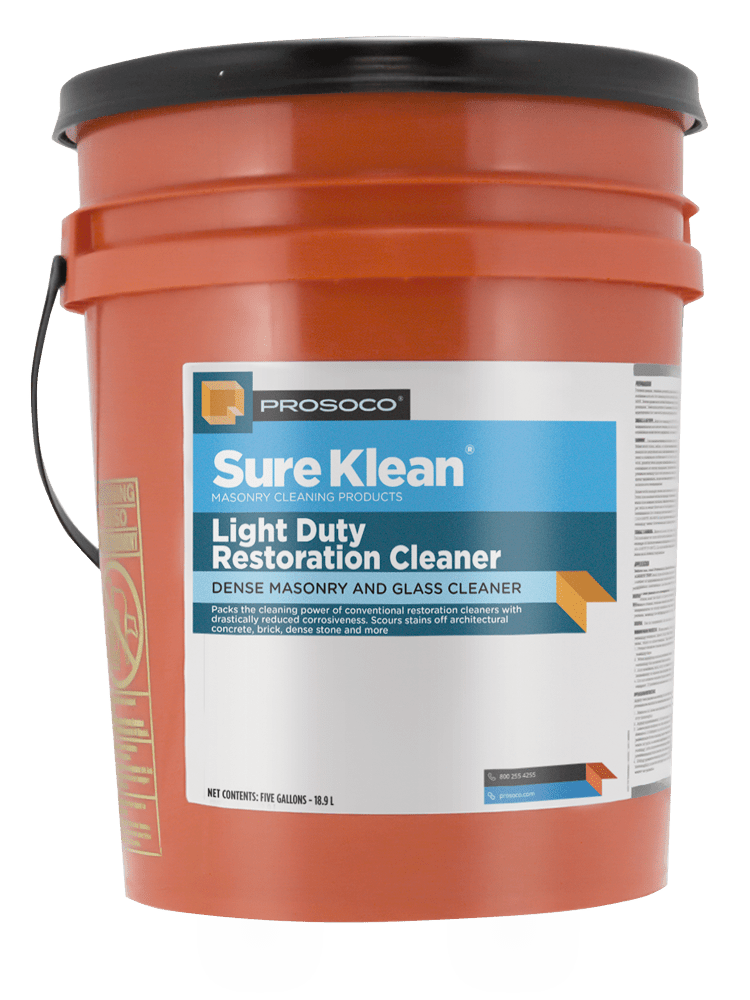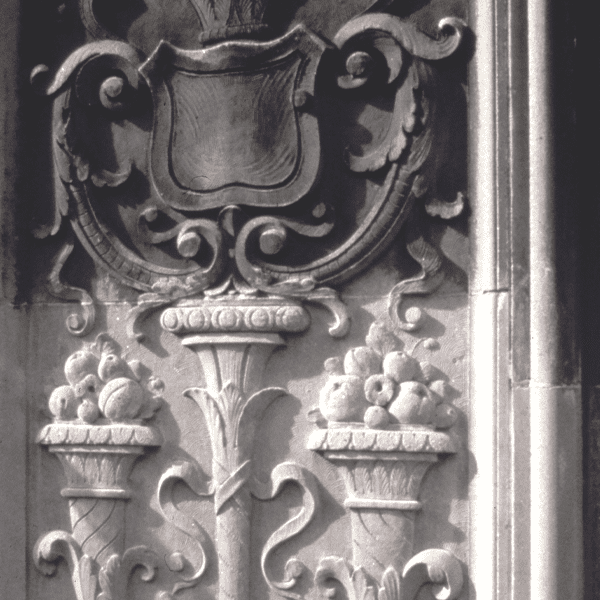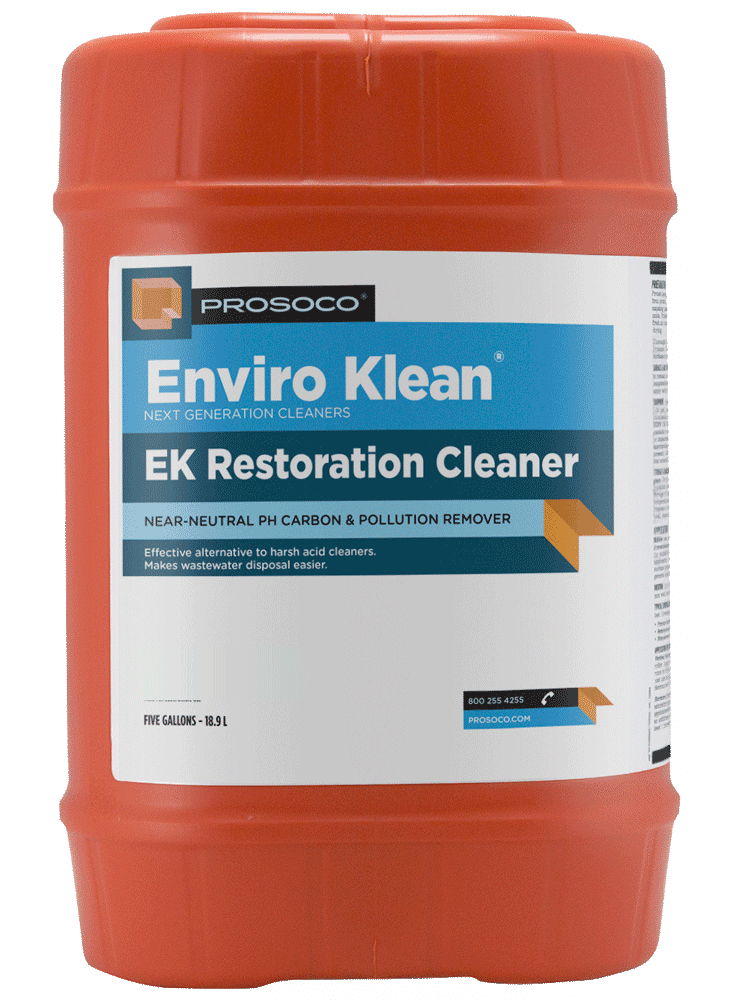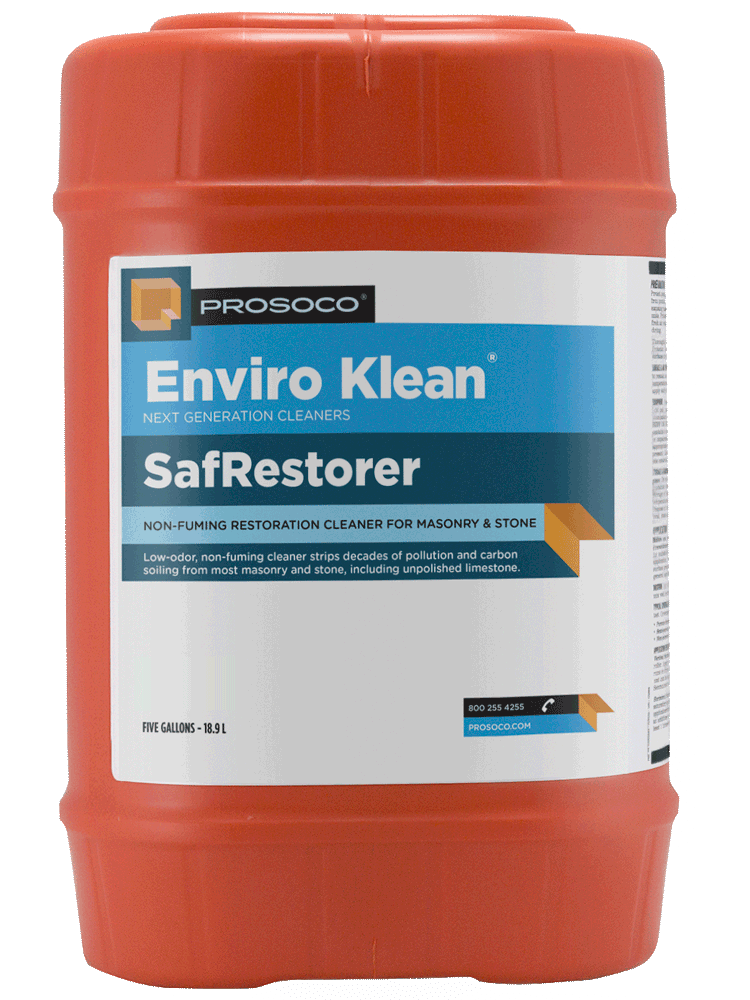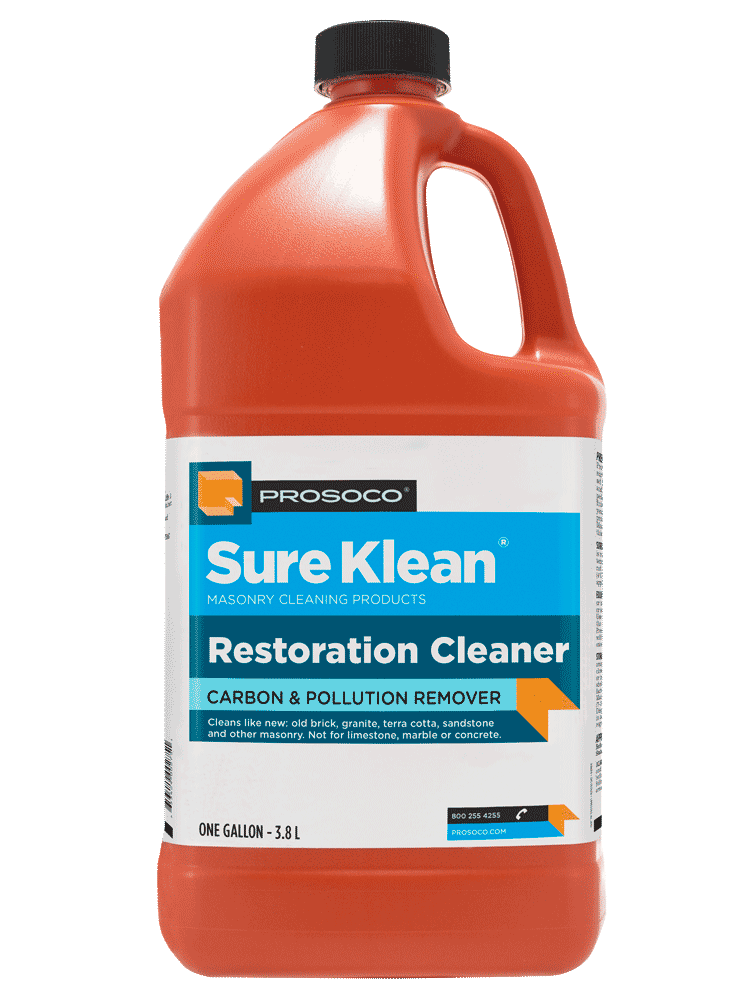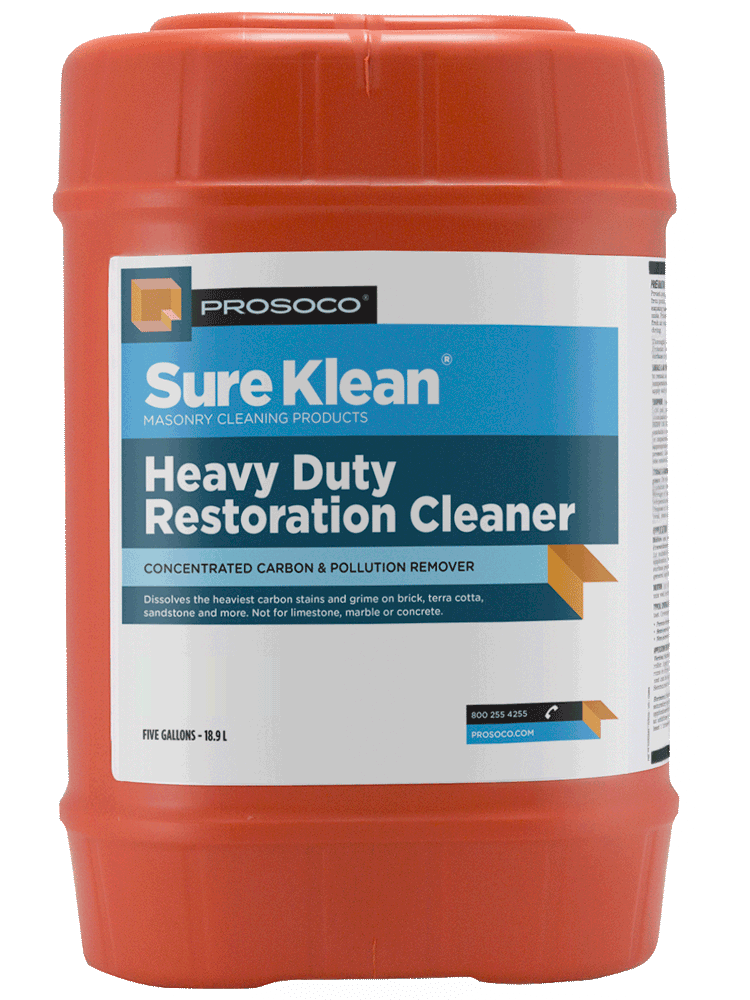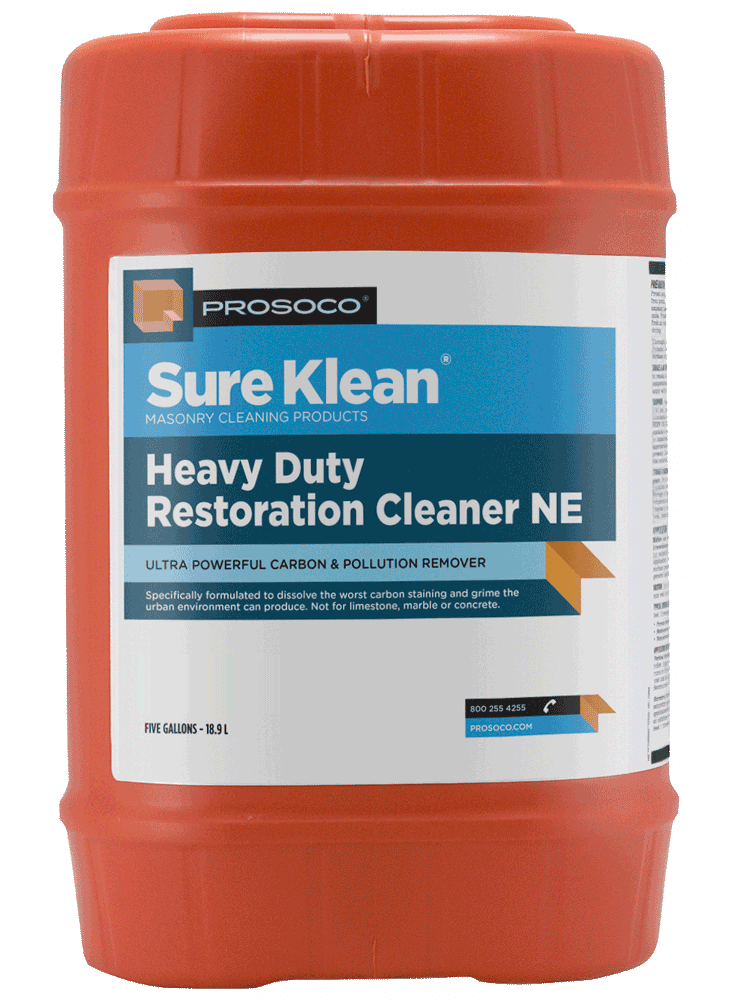- Highly efficient restoration cleaner for most dense masonry surfaces.
- Reduced potential for damage to adjacent or surrounding surfaces.
- Safer, lower odor and less corrosive than conventional restoration cleaners based on hydrofluoric acid or ammonium bi-fluoride.
- Removes rust stains and red clay stains from brick.
- Restores clarity of most common flush window glass streaked and damaged by pollution and water rundown from adjacent building materials.
Light Duty Restoration Cleaner
Dense masonry & glass cleaner
Light Duty Restoration Cleaner
Dense masonry & glass cleaner
Description
Light Duty Restoration Cleaner safely removes light to moderate atmospheric and oxidation staining from dense masonry surfaces and removes difficult calcium (concrete) stains, white scum and other staining from most window glass. Compared to conventional acidic restoration cleaners, this highly efficient, gelled cleaner minimizes the potential for damage to unprotected non-masonry surfaces.
Documentation

Colleen Peters, Hard Surface Care Customer Support
LIGHT DUTY RESTORATION CLEANER
PRODUCT SUPPORT
Features
Technical Data
- SHELF LIFE1 year in tightly sealed, unopened container
- VOC CONTENTnot applicable
- FORMClear, colorless paste/gel liquid
- PH1.5–2.0
- COVERAGE RATE50-175 sq ft/gal. See Product Data Sheet for variations per substrate.
- FREEZE POINTNon-applicable
- FLASH POINTNon-applicable
- TOTAL SOLIDSNon-applicable
- WT/GAL9.34 lbs
- AVAILABLE SIZES5-gal
OVERVIEW
Sure Klean® Light Duty Restoration Cleaner safely removes light to moderate atmospheric and oxidation staining from dense masonry surfaces. Removes difficult calcium (concrete) stains, white scum and other staining from most window glass. This highly efficient, gelled cleaner is a colorless blend of cleaning agents, detergents and inhibitors. Compared to conventional acidic restoration cleaners, the corrosive characteristics of Light Duty Restoration Cleaner have been dramatically reduced to minimize the potential for damage to unprotected non-masonry surfaces.

